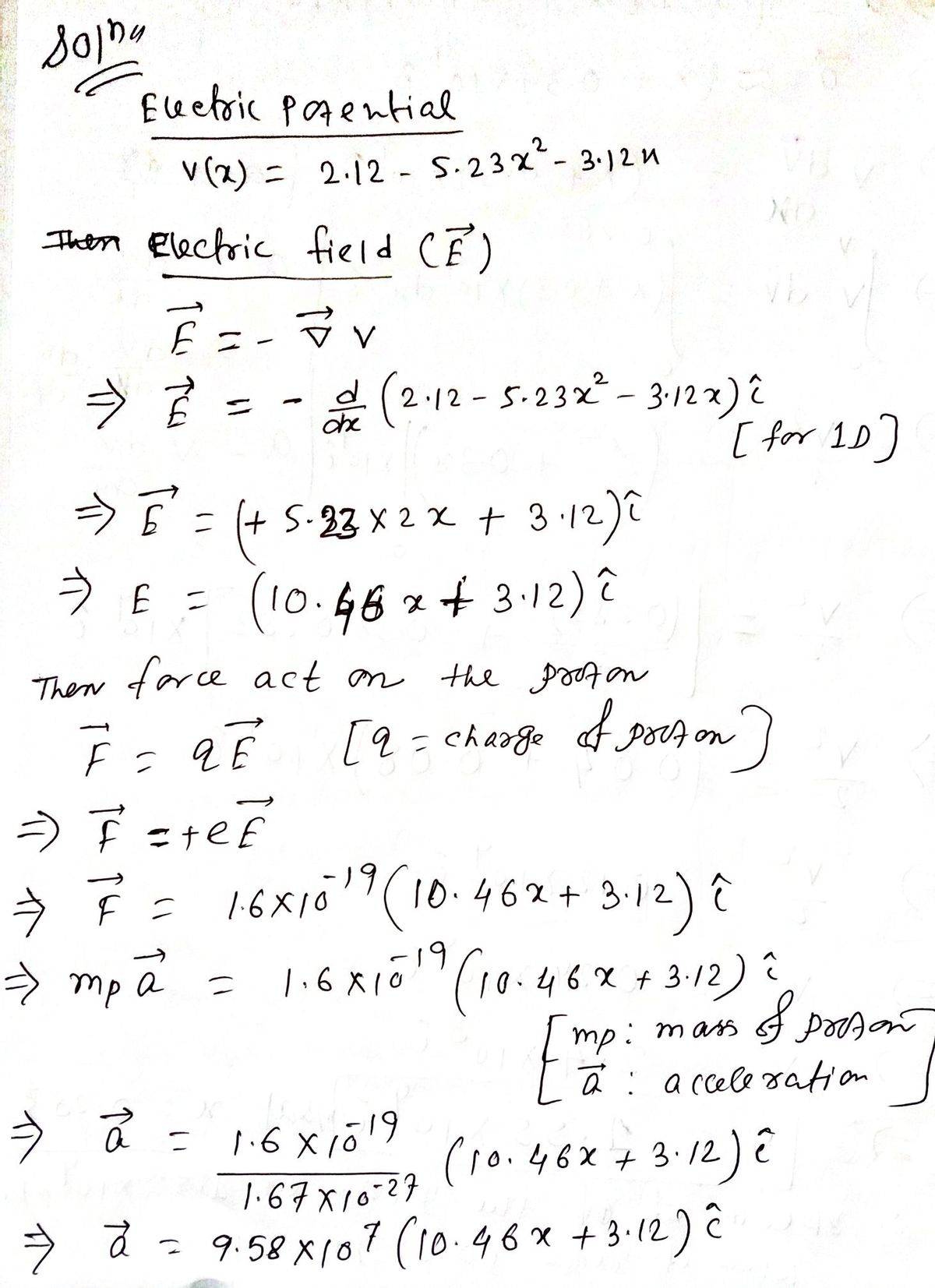Along the x-axis, the potential is given by: V(x) = 2.12 - 5.23x - 3.12x where x is in meters, and V is in Volts. A proton is released from rest at the origin, and it moves along the positive x-axis. Find the speed of the proton. in m/s, when it reaches (0.283 m, 0).
Along the x-axis, the potential is given by: V(x) = 2.12 - 5.23x - 3.12x where x is in meters, and V is in Volts. A proton is released from rest at the origin, and it moves along the positive x-axis. Find the speed of the proton. in m/s, when it reaches (0.283 m, 0).
Related questions
Question
Questions in the attachment
![**Potential Energy and Proton Motion**
Along the x-axis, the potential is given by the equation:
\[ V(x) = 2.12 - 5.23x^2 - 3.12x \]
where \( x \) is in meters, and \( V \) is in Volts.
A proton is released from rest at the origin, and it moves along the positive x-axis. The task is to find the speed of the proton, in meters per second (m/s), when it reaches the position \( (0.283 \, \text{m}, \, 0) \).
There are no graphs or diagrams to describe.](/v2/_next/image?url=https%3A%2F%2Fcontent.bartleby.com%2Fqna-images%2Fquestion%2Fdeb38e25-f570-4fb2-8928-75af9ed123c1%2F6a9124b8-15ef-4b0e-b690-48ec084463d5%2F40kbfjj_processed.png&w=3840&q=75)
Transcribed Image Text:**Potential Energy and Proton Motion**
Along the x-axis, the potential is given by the equation:
\[ V(x) = 2.12 - 5.23x^2 - 3.12x \]
where \( x \) is in meters, and \( V \) is in Volts.
A proton is released from rest at the origin, and it moves along the positive x-axis. The task is to find the speed of the proton, in meters per second (m/s), when it reaches the position \( (0.283 \, \text{m}, \, 0) \).
There are no graphs or diagrams to describe.
Expert Solution
Step 1

Step by step
Solved in 2 steps with 2 images
